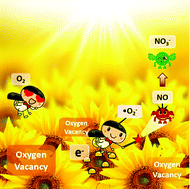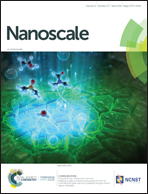The activation of oxygen through oxygen vacancies in BiOCl/PPy to inhibit toxic intermediates and enhance the activity of photocatalytic nitric oxide removal†
Abstract
Photocatalysis is regarded as a promising technology for indoor air purification. Despite much effort, the inhibition of toxic intermediates and the promotion of nitric oxide (NO) oxidation activity still limit real applications due to catalyst design constraints. In order to circumvent this issue, oxygen vacancies were fabricated through a strong interaction between BiOCl and polypyrrole (PPy) based on computational predictions. Oxygen vacancies worked as sites to activate O2 molecules, and the relative barrier energies of NO oxidation were significantly reduced due to the O2 activation process. With the oxygen vacancy modification, the oxidizability of BiOCl was improved, and the generation of the superoxide radical (˙O2−) was promoted on BiOCl/PPy, while the hydroxyl radical (˙OH) remained unchanged under visible light irradiation. As a result, the efficiency of NO oxidation increased from 12% to 28%, while the NO2 production was inhibited completely. Finally, in situ diffuse reflectance infrared Fourier-transform spectroscopy (DRIFTS) investigations were conducted to shed light on the mechanism of the NO oxidation process. This work provides an in-depth understanding of the interaction between oxygen vacancies and O2 during the NO oxidation process, which offers a scheme to control the oxidation reaction.



 Please wait while we load your content...
Please wait while we load your content...